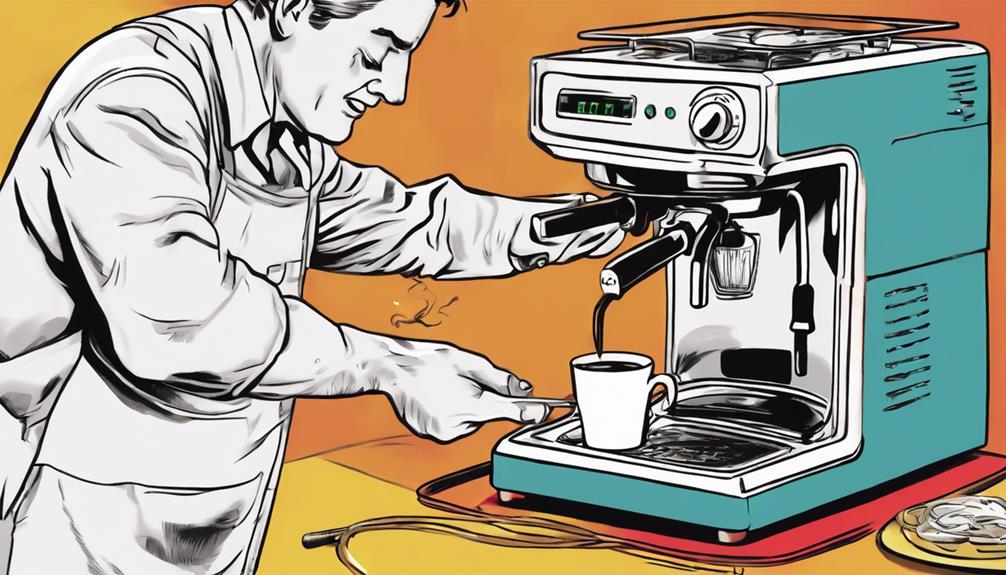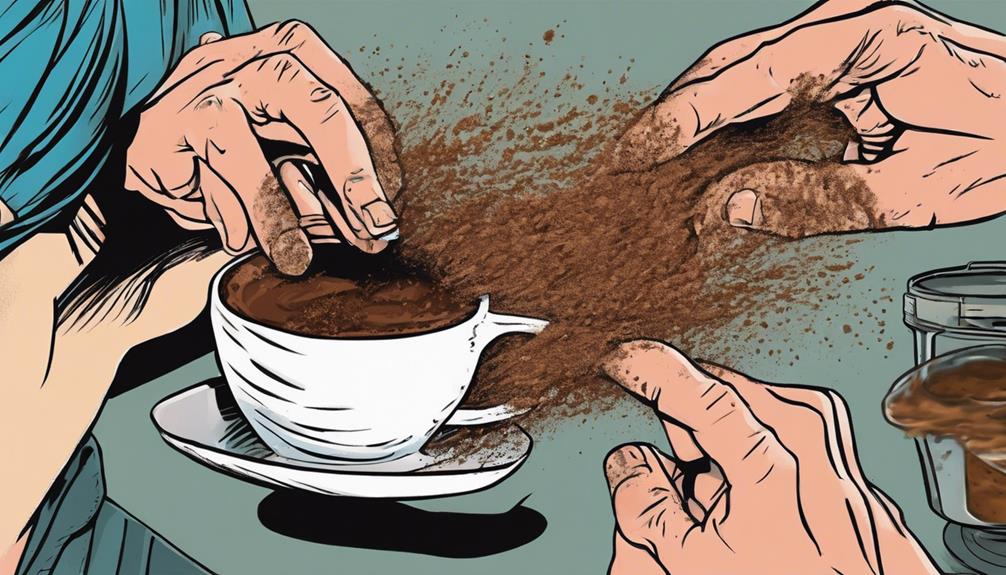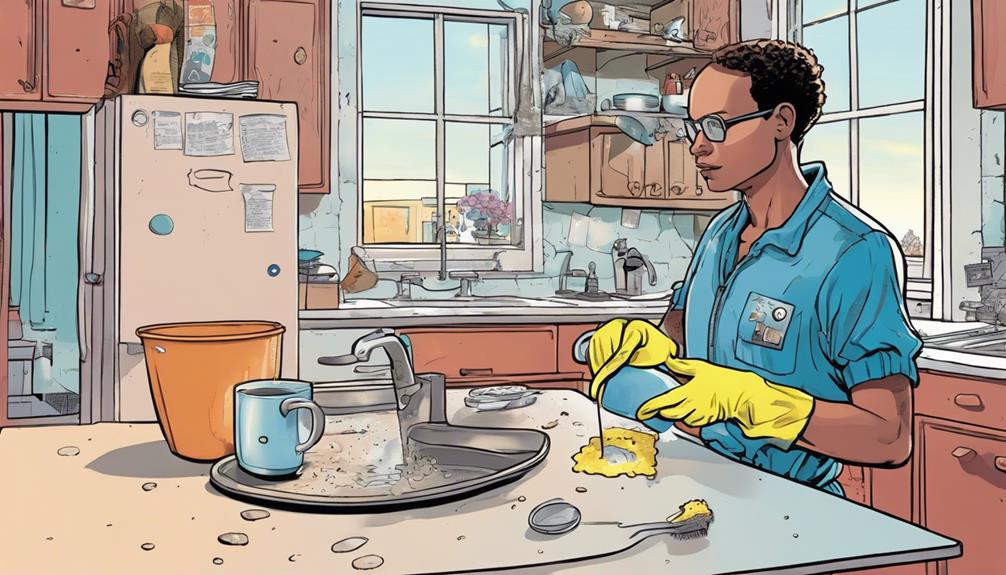To change the temperature on your Bunn coffee maker, identify the temperature control knob on the thermostat. Turn the knob to select a temperature ranging from 190 to 205 degrees Fahrenheit for optimal brewing. In some models, adjustments may require a screwdriver, so be sure to follow the manufacturer’s instructions carefully. Adjusting the water temperature will enhance the flavor profile of your coffee. Once you master this process, you’ll achieve a delicious brew every time. Uncover the secrets to perfect temperature control and take your coffee brewing skills to the next level. In addition to adjusting the temperature, it’s crucial to consider the ideal coffee to water ratio. The general recommendation is 1 to 2 tablespoons of coffee for every 6 ounces of water, but feel free to adjust to suit your personal preferences. Striking the perfect balance between temperature and coffee to water ratio will result in a consistently outstanding cup of coffee. Once you master these two elements, your coffee brewing experience will be truly exceptional.
Key Takeaways
- Locate thermostat control knob on Bunn coffee maker.
- Adjust temperature between 190-205°F for optimal brewing.
- Use screwdriver if needed for adjustments.
- Follow manufacturer's instructions for accurate changes.
- Fine-tune temperature to enhance coffee flavor.
Accessing Temperature Control Settings
To access the temperature control settings on your Bunn coffee maker, locate the printed circuit boards behind the removable panel. When you're ready to brew that perfect cup of coffee, adjusting the temperature can make a significant difference.
The control knob on the thermostat allows you to fine-tune the hot water temperature for making coffee just the way you like it.
Behind the scenes, the thermostat regulates the temperature of the water that flows through your coffee maker. By adjusting this setting, you can make sure that the water is at the ideal temperature to extract the best flavors from your coffee grounds.
To make these adjustments, you may need to remove screws or panels to reach the thermostat.
Always refer to the user manual or reach out to Bunn customer support for guidance on how to access and adjust the temperature settings properly.
With the right temperature control, you can elevate your brewing experience and enjoy a delicious cup of coffee every time.
Adjusting Temperature Settings
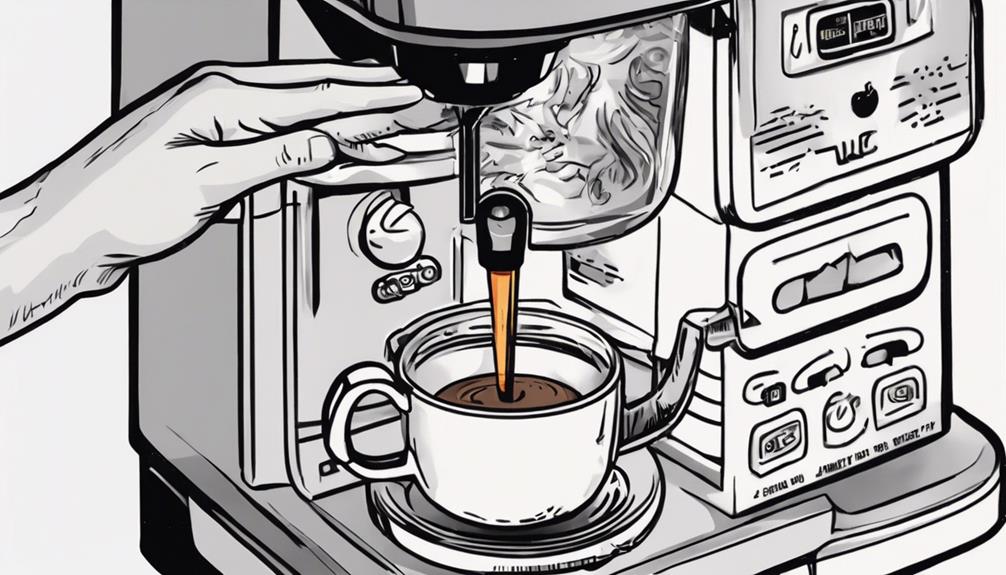
Locate the temperature control knob on your Bunn coffee maker's thermostat to adjust the water temperature for best brewing. The temperature setting typically ranges from 190 to 205 degrees Fahrenheit to achieve ideal results.
Some Bunn models may require a screwdriver for adjusting the temperature settings to ensure precise management over the brewing process. It's important to follow the manufacturer's instructions carefully when making these adjustments to guarantee the safety and accuracy of the temperature settings.
Regularly monitoring and adjusting the temperature settings based on your brewing preferences and the quality of your coffee is necessary for consistently delicious results. By fine-tuning the water temperature, you can enhance the flavor profile of your coffee and customize it to your liking.
Remember to make gradual adjustments and test each batch to find the perfect temperature that suits your taste buds. Adjusting the temperature settings on your Bunn coffee maker allows you to personalize your brewing experience and enjoy a cup of coffee tailored to your preferences.
Saving Temperature Changes
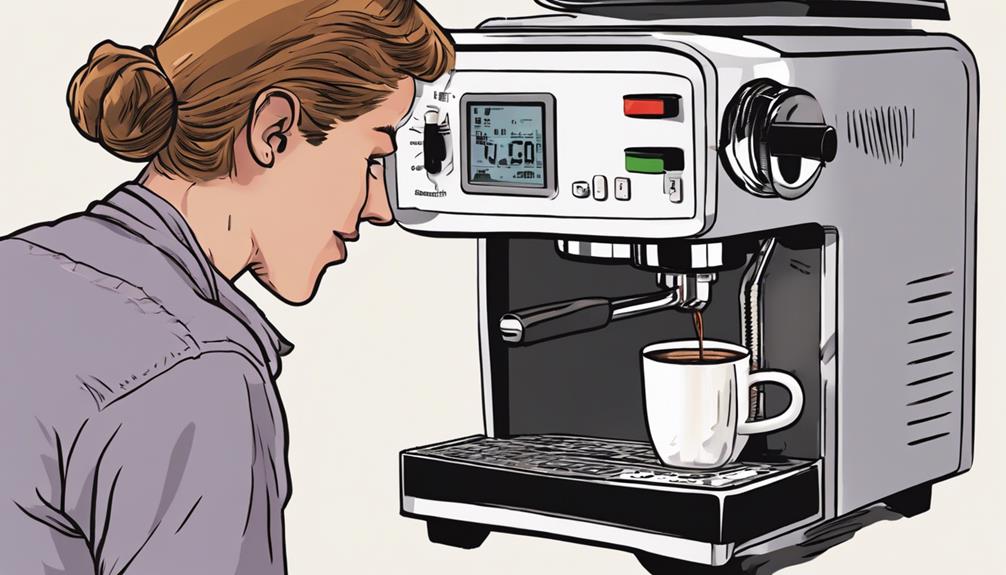
Find the temperature control knob on your Bunn coffee maker's thermostat to save your preferred temperature changes for consistent brewing results. The temperature control is usually located on the printed circuit board behind a removable panel.
Once you've set the temperature to your liking, the Bunn coffee maker will maintain that temperature for brewing, ensuring your desired results every time. Saving your temperature changes is essential for achieving ideal brewing outcomes based on your preferences.
Customizing Brewing Temperature

Customizing the brewing temperature on your Bunn coffee maker is a straightforward process that allows you to tailor your coffee brewing experience to your preferences.
Bunn coffee makers offer the flexibility to adjust the brewing temperature by manipulating the thermostat control knob. The recommended temperature range for best brewing in most Bunn models is between 200 and 205 degrees Fahrenheit.
To customize the temperature, locate the temperature control knob situated on the printed circuit board behind a removable panel. By turning the control knob clockwise, you can increase the brewing temperature, while turning it counterclockwise will decrease it.
This adjustment is vital as it directly impacts the extraction of flavors and aromas from the coffee grounds. Ensuring that your Bunn coffee maker operates at the desired temperature will help you achieve a perfectly brewed cup of coffee customized to your liking.
Ensuring Optimal Coffee Temperature

To guarantee your Bunn coffee maker consistently brews coffee at the best temperature, regularly monitoring and adjusting the thermostat control knob is essential.
The ideal brewing temperature for a Bunn coffee maker is typically set at 205 degrees Fahrenheit. This temperature is vital for extracting the fullest flavors from your coffee grounds.
Factors such as altitude, room temperature, or personal taste preferences may require adjustments to the brewing temperature.
By keeping a close eye on the thermostat control knob and making necessary changes, you make sure that your coffee is brewed at the perfect temperature each time.
Consistency in temperature maintenance leads to a high-quality coffee output consistently.
As a result, taking the time to check and adjust the temperature settings will result in a delicious and satisfying cup of coffee every time you brew with your Bunn coffee maker.
Frequently Asked Questions
Why Is My Bunn Coffee Maker Not Getting Hot Enough?
Your Bunn coffee maker may not be getting hot enough due to a faulty thermostat. Regular deliming can help remove mineral buildup that affects heating performance. Check water level and heating element. Follow the user manual for temperature adjustments.
What Temp Should Bunn Brew At?
To brew delicious coffee with your Bunn maker, guarantee it brews at 195-205°F. Aim for the sweet spot of 200°F for the best flavor. Consistent temperature control is key for a perfect cup!
How Do You Calibrate a Bunn Machine?
To calibrate a Bunn machine, access the temperature control knob. Use a thermometer to measure the water temperature and adjust the knob. Remember to turn off the machine first to avoid accidents. Calibration is as essential as tuning a guitar for great coffee.
How Do I Adjust the Water Level in My Bunn Coffee Maker?
To adjust the water level in your Bunn coffee maker, locate the water level adjustment screw inside the machine. Use a screwdriver to turn it clockwise for more water or counterclockwise for less. Test with small batches to confirm adjustments.
Conclusion
Now that you know how to adjust the temperature on your Bunn coffee maker, you'll be able to brew your perfect cup of coffee every time.
Just like a conductor fine-tuning their orchestra, you can now customize the temperature settings to suit your taste preferences.
So go ahead, experiment with different temperatures and create your own symphony of flavors with each brew!
